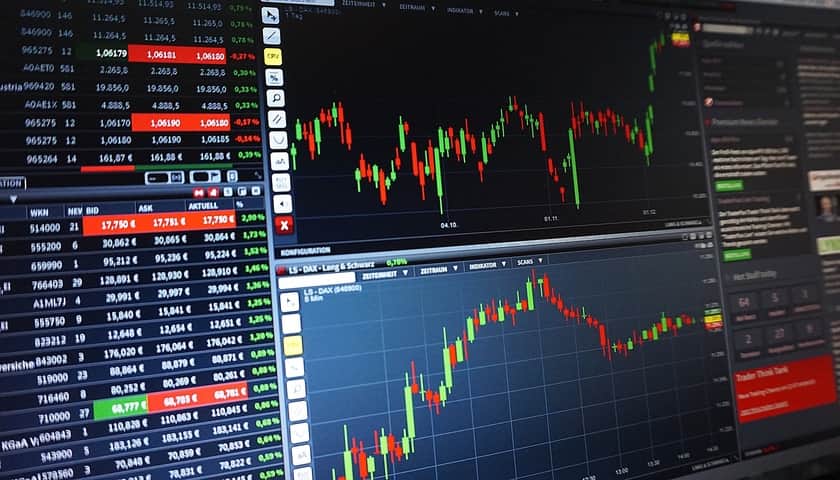Last Updated on 22/05/2021 by Deepak Singla
Forex trading is also referred to as foreign exchange, FX, or assets trading, which is a decentralized international market where all the earth’s money is traded by forex traders. The forex market is the biggest and the most liquid market in the world, with a normal daily trading number outperforming 5 trillion dollars.
Now, if you expect to trade in the forex demands, you need a proxy. But what precisely is a proxy? To understand this, contemplate the cult. Let’s put it this way: you want to buy a ball, so you go to a freeway market. The ball is what you expect to buy – the boulevard market is the place where you can do this because that is where the community is selling balls.
Likewise, imagine you are presently selling balls and need to locate buyers; you can go to the parkway market because that is where your buyers are – that is where people are buying a ball. A proxy is a place where customers and dealers go to purchase and retail appliances, such as currencies.
The forex trading agent regulates as a mediator between you and the market. In other phrases, to find a customer or a dealer of currencies, you can go to a broker, and they conform you up to either a respective broker or a respective buyer. Just like darwinex which is a global Forex and CFDs broker to invest in but you should be very careful before to choose or investing money. for safer side you must read the reviews and invest your time in the market about that company. You can read the darwinex review to get the more information about the same here. Nonetheless, instead of just living as the mediator between you and another buyer or seller, they are also the mediators between you and what is called a “liquidity provider”.
Type of charts Forex trader should know about
To questionnaire how the rate of a currency pair moves, you require some ways to stare at its chronological and widespread price behavior. There are different types of Forex charts. A graph, or more particularly, a price graph, arises to be the first tool that every broker borrowing technical analysis desires to learn. Graphs are user-friendly since it’s pretty susceptible to understand how price actions are illustrated over time since it’s so observable. With a table, it is simple to observe and assess a currency pair’s trends, structures, and propensities.
Let’s have a look at the three extensively popular types of rate charts which the traders should follow:
Line chart
These graphs are useful for shortly deducing the trend barely the current/close rate is graphed – as such, these graphs should not be borrowed for placing stop penalty or put up with profit orders. A line chart provides traders with a precise visualization of where the tariff of security has traveled over a given duration. Because line charts only show-closing rates, they curtail disturbance from less significant times in the trading day, awfully as the clear, big, and faded.
Dealers can be subdued with too extensive information when assessing a security’s graph. The trading term paralysis by analysis describes this manifestation well. Using graphs that exhibit a surplus of price advice and arrows can give considerable signals that steer to turmoil and confound trading judgments.
Since shutting prices are generally contemplated, it is reasonable to see why line charts are prominent with investors and dealers. Other prominent styles of graphs include bar charts, candlestick charts, and figure charts. Dealers can use line graphs with other charts to help see the full technological portrait.
Read more: Effective Tips to Consider before Starting Online Trading World
Bar chart
Bar charts are one of the extensively outstanding trading chart types. They give a lot of knowledge that the day brokers can use when formulating trading judgments and are moderately easy to examine and analyze. Bar charts consist of an entrance foot—facing left—an upright line, and an ending foot—facing right.
Every bar comprises the open, huge, bad, and short rate that transpired during a distinct interval, set by the trader. A bar chart is an anthology of price bars, with each bar exhibiting price tendencies for a given time. Every bar has an upright line that reveals the highest and poor price gained during the period.
The slot price is captioned by an elegant straight line on the left of the steep line, and the ending price is captioned by a tiny straight line on the right of the upright line. Each bar normally shows sunken, high, low, and shutting prices. This may be determined to show only the high, low, and close. Technical analysts use bar charts—or other chart kinds such as candlestick or line charts—to monitor process action, which aids in trading determinations and so on.
Read more: 15 Best Trading App in India for Online Stock Trading
Candlestick chart
Candlestick charts are rate charts. In business terms, candlesticks graphically illustrate market attitude. Prices on candlestick graphs are characterized by candlesticks. This aspect of rate manifestation was invented in Japan and made its first impression in the 1700s. The candlestick chart usually contains a corpse and two wicks.
The core of this chart is depicted as a rectangle. In the case of a bull candlestick chart, the open and the culmination are demonstrated by the ground and the top of the rectangle. In bear candlestick charts, the time’s ending price tumbles below the duration’s opening price significantly. A vital appreciation is an area where these inundating patterns are placed in the context of an across-the-board price tendency.
Humans being visual beings, one of the aptest benefits that these charts provide is that the body can be shown in colors. With the help of this, the forex trader can get an image of the curbing price of the clients or sellers. The wicks appear as two vertical chains commemorating the elevated and the low rates that have been attained previously.
By the drastic high of the top wick and the ultimate low of the bottom wick, the range of candlestick is depicted. A green candle illustrates a clear bullish market sentiment. Such a candle is better referred to as a bull candle. The thriving market tendency diminishes when rates are continuously decreasing in a sustained way. Modifications made in market trends may exemplify good trading alternatives. Hence, it becomes accordingly beneficial for dealers to be able to recognize the changes in market movement.




Great post!
Thanks for sharing this post here with us.